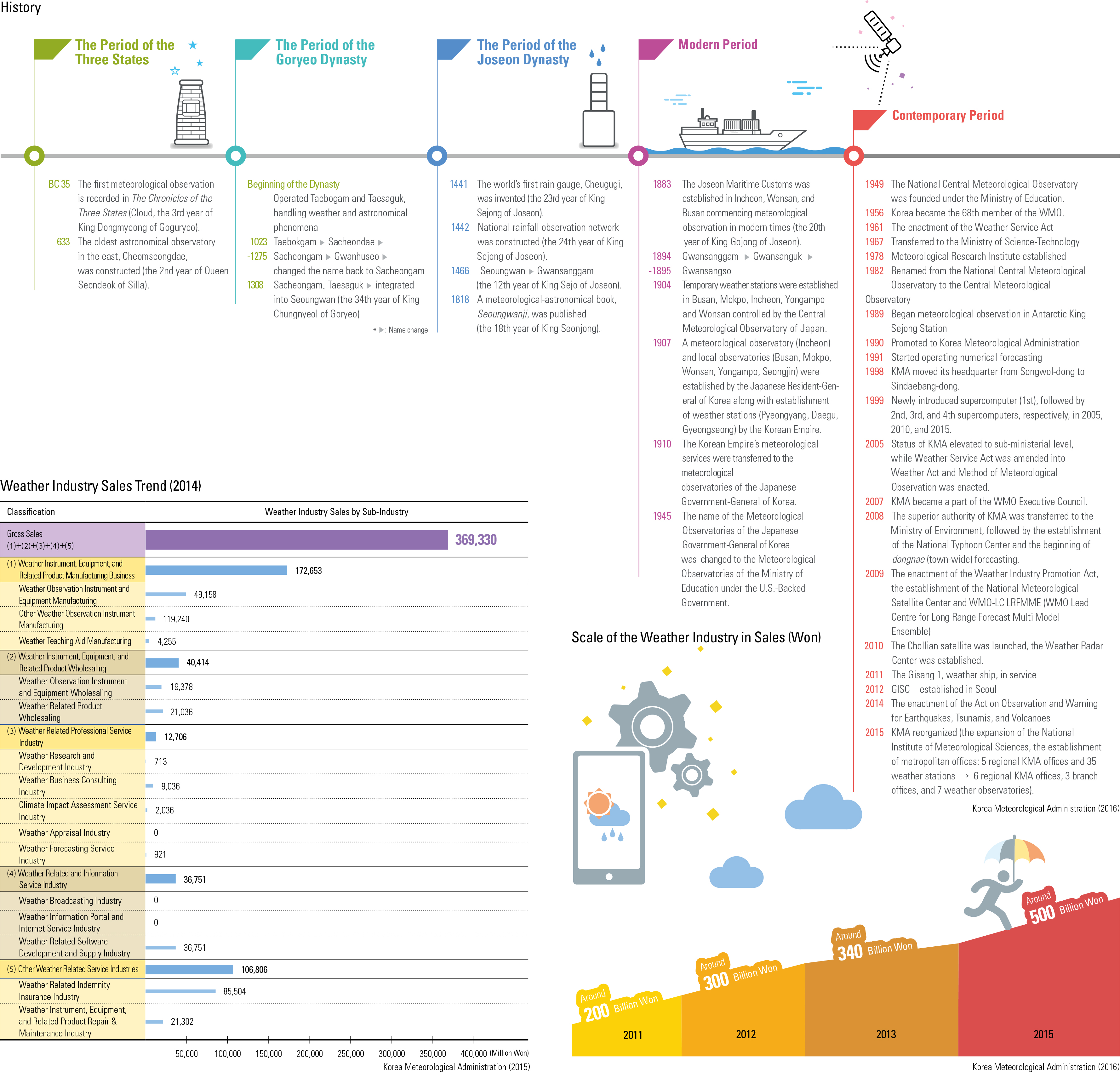English II
According to Samguk yusa, Korea’s meteoro- logical history began with Hwanung, the legend- ary founder of Gojoseon, who descended from heaven with 3,000 followers to Sindansu in Tae- baeksan to rule the world, along with his minis- ters of cloud, rain, and wind, who were capable of controlling the basic weather elements. Since the period of the Three Kingdoms, there have been numerous meteorological observation records. During the Goryeo Dynasty, Seoungwan was established and operated as a government office dealing with weather and astronomical phenome- na. During the Joseon Dynasty period, great prog- ress was made in meteorological observations. During this period, the world’s first rain gauge, Cheugugi, was invented (1441), and a rainfall observation network was built on a national scale Moreover, the rst instruments for measuring the water level of the Cheonggyecheon and the Han- gang were invented. There were also instruments for observing wind direction. In the 19th century, meteorological observation was modernized when P. G. Von Moellendorf, a German appointed as the Inspector General of Marine Customs by King Gojong, the Emperor of the Joseon Dynasty, installed meteorological instruments at Incheon Port and Wonsan Port in 1884, and another at Busan Port in 1887. Begin- ning in 1904, five temporary weather stations were established in Busan, Mokpo, Incheon, Yongampo, and Wonsan, followed by stations at Seongjin and Jinnampo. These stations formed a meteorological network that laid the foundation for the modern weather service. In 1907, under the umbrella of the Incheon weather station, eight weather stations were established in Gyeongseong (currently Seoul), Pyeongyang, Yongampo, Dae- gu, Busan, Mokpo, Wonsan, and Seongjin. These stations began forecasting the weather as soon as standards for forecasting and storm warnings were established. Additional weather stations were in- stalled in Gangneung (1911), Unggi (1914), and Junggangjin (1914) as parts of the network. After establishment of the government in 1948, the Ministry of Education took charge of the meteorological service. In 1949, the Central Me- teorological Office was founded as a part of the Ministry of Education. The period from 1949 un- til the 1960s saw the organization of laws and im- provement in the Meteorological Communication (METCOM), which enabled the establishment of an immediate exchange system for meteorological observations and data analysis. All these efforts paved the way for international cooperation. The 1970s was the decade that saw the most improvement since the beginning of modern meteorological service in the nation. The con- temporary meteorological administration and technology system, including digitalization, sat- ellite, and radar-related observation, were built during this period. During the following decade, Korea’s weather service established a solid basis for contemporization with expansion of the mete- orological network, modernization of equipment, implementation of local forecasting, objectifica- tion of forecast data, digitalization of the weather service, and the provision of climate data and industrial meteorological information.
page_2 |
